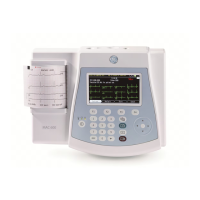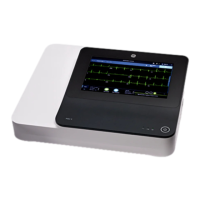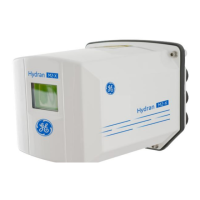GE Analytical Instruments ©2006 14-4 DLM 14291 Rev. A
Gladwin and co-workers have also reported a technique to measure Hb(FeII)NO
(Gladwin, M.T., Ognibene, F.P, Pannell, L.K., Nichols, J.S., Pease-Fye, M.E.,
Shelhamer, J.H., and Schechter, A.N., Relative role of heme nitrosylation and
-cysteine 93 nitrosation in the transport and metabolism of nitric oxide by
hemoglobin in the human circulation Proc Natl Acad Sci 2000; 97:9943-9948).
The method employs two measurements using KI/I
3
-
/acetic acid, without and
without pretreatment with KCN/K
3
Fe(CN)
6
. Treatment with the CN
-
releases
the Fe-bound NO, to permit detection of the S-bound NO only (after removal of
the nitrite). The I
3
-
reagent will also liberate Fe-bound NO, so without
pretreatment, both the Fe-bound and S-bound NO are detected. The difference
between the measurements is the amount of Fe-bound NO.
Headspace Measurement of Nitric Oxide
At physiological conditions, nitric oxide is a gas with limited solubility in water.
In cell cultures, some of the NO produced will diffuse from the liquid into the
gas above the media. Analysis of the NO in the gas above cultured cells (so-
called headspace) can be used as an alternative to measuring nitrite/nitrate in
the media. In headspace analysis, a gas-tight syringe is used to collect the gas
above the media and this gas is injected into the NOA. The main advantage of
headspace analysis is the sample is a gas rather than a liquid. This eliminates
the need to deproteinize samples and reduces the problems associated with
nitrite/nitrate contamination. The main disadvantage of headspace analysis is
that gas-tight containers must be used to collect samples (most cell culture
flasks are not gas-tight) and the sensitivity of the assay will be lower than
nitrite/nitrate measurement since some of the NO produced will be oxidized
and remain in the fluid.
Headspace analysis can be used for a wide range of samples including cell
cultures, tissue homogenates, and when combined with reducing agents,

